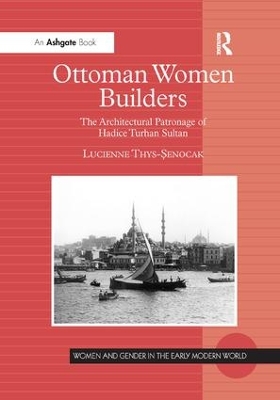
Veronica 🦦
Written on Nov 15, 2017
Ottoman Women Builders was written for a general audience of early modern scholars & students. The prose is clear & straightforward. It's comprehensive. The evidence provided are numerous but presented in a manner that allows the reader to digest them, despite the fact that they are sourced from a variety of sources. The book is organized in a way that allows for paragraphs to flow into each other. Even those who are just lovers of history should have no problem reading through this book because Thys-Senocak does offer insights into the various topics to help the reader understand as she presents her evidence to support her argument that Turhan Sultan, despite being away from the public view, legitimized her political authority through patronage of bold architectural works & established her as protector of the empire when she commissioned the construction of the Seddü lbahir and Kumkale fortresses.
Chapter 1 is the introduction. It gives readers an insight to what to expect & offers an introduction to the themes presented in the following chapters.
For those who are more interested in Turhan herself, Chapters 2 & 3 gives a thorough introduction & historical context into this amazing woman as well as draws on comparisons with her Ottoman & European counterparts like Nurbanu, Kösem, Elizabeth I, & Catherine & Maria de'Medici.
Chapter 2 provides the reader with background information on Turhan herself as well as her rise from concubine to valide sultan. Even if you have not read [b:The Imperial Harem: Women and Sovereignty in the Ottoman Empire|519140|The Imperial Harem Women and Sovereignty in the Ottoman Empire|Leslie P. Peirce|https://i.gr-assets.com/images/S/compressed.photo.goodreads.com/books/1359085997l/519140._SY75_.jpg|507055] by [a:Leslie P. Peirce|288210|Leslie P. Peirce|https://images.gr-assets.com/authors/1562776995p2/288210.jpg], Thys-Senocak takes the possibility into account & gives a brief overview of how things operate within the harem. It is in this chapter that Thys-Senocak explains Turhan's relationship with Ibrahim as well as her relationship with Kösem. Also, there is a section in the chapter called "Administrative Duties" which recounts Turhan's duties as valide sultan & gives readers an insight into Turhan herself. Thys-Senocak makes it a point to point out that Turhan has always been concerned with the empire's security as well as the fact that she had "cultivated a strong image of an imperial figure dedicated to justice".
Chapter 3 gives more context in terms of how Turhan compared to her European & Ottoman counterparts. It's here that once more, Thys-Senocak takes into account that you might not have read Peirce's book & explains, briefly, the limitations of Ottoman women vs their European counterparts, especially in terms of their architectural patronages. Here, she also points out the relationship between a woman's life stages & their power & agency. Again, there's a comparison between European & Ottoman women ; Thys-Senocak makes it a point to point out that the prestige & legitimacy that a valide sultan had was derived from her position as the mother of the reigning sultan, not as widow of the deceased sultan.
Thys-Senocak shifts in Chapters 4 & 5 from Turhan herself to her architectual endeavors where she brings the fire so to speak. It is here that she offers a beautiful & detailed account of Turhan’s major architectural projects : the Seddü lbahir and Kumkale fortresses & the Yeni Valide Mosque in Eminönü.
In Chapter 4, goes in depth about the Seddü lbahir and Kumkale fortresses. As Thys-Senocak pointed out in Chapter 2, Turhan has always been concerned with the empire's security. However, she goes on further & is able to successfully argue that Turhan had commissioned the two fortresses to legitimize herself & her power & authority. Thys-Senocak points out that traditionally, concern with the empire's safety is something the sultan would be focused on. Thys-Senocak successfully argues that by taking on the task & commissioning the fortresses, Turhan legitimized herself as protector of the empire. She also argues that Turhan did this in hopes of preparing her son, Mehmed, to become as famed of a sultan as his ancestors.
This brings us to Chapter 5, which talks about the Yeni Valide Mosque in Eminönü in Istanbul which Thys-Senocak argues is what completely legitimized & fully established Turhan's power as well as advertised her piety. Thys-Senocak carefully explains the history behind the Yeni Valide Mosque, the architecture & planning of the mosque itself (which she argues was done on purpose to allow Turhan to view the complex), the politico-ideological messages, as well as pointing out the inscriptions on the walls which Thys-Senocak argues was meant for Mehmed in hopes of driving him to become a formidable sultan.
Chapter 6 is the conclusion which reiterates Turhan’s architectural patronage as deliberate & well calculated attempts to legitimizing her power & political authority, despite the fact that unlike her European counterparts, she was hidden from public view.
Ottoman Women Builders is a remarkable scholarly work. It represents a valuable contribution to Ottoman women’s history as well as architectural history & the study of imperial female patronage. Scholars, students, & enthusiasts alike will find this work to be worth taking the time to read & is a valuable text for those studying this field. It gets 5 stars.
